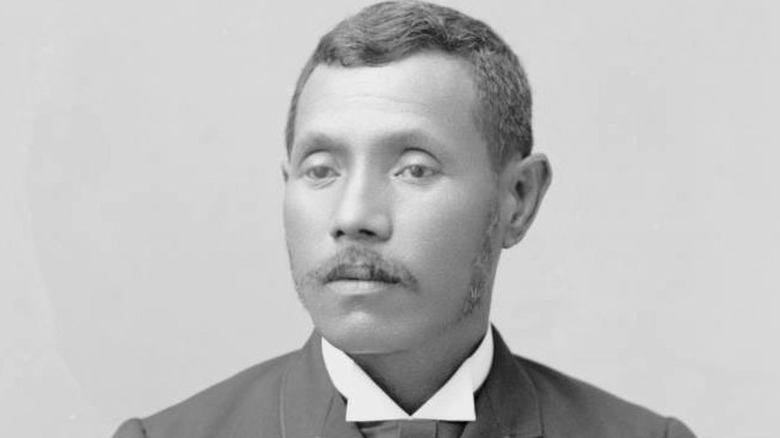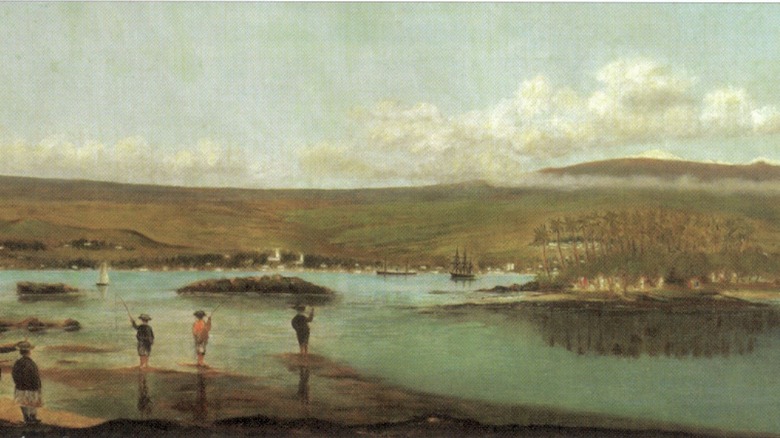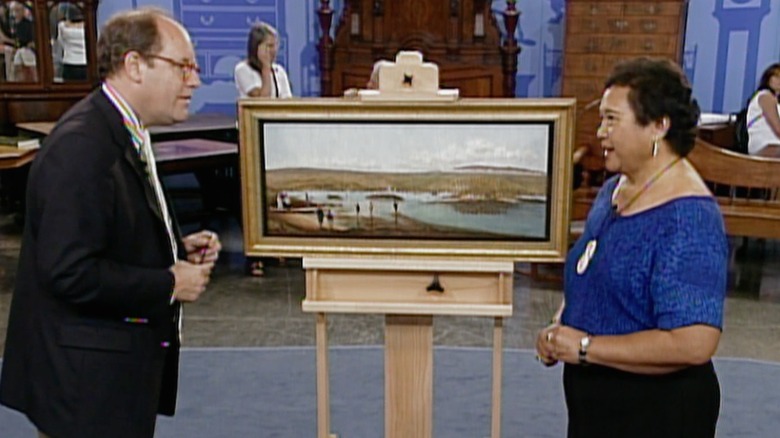Whatever Happened To The 1888 Joseph Nawahi Oil Painting From Antiques Roadshow?
Joseph Nāwahī has been described as Hawaii's renaissance man. Born Iosepa Kaho'oluhi Nāwahī-o-Kalani'ōpu'u in 1842 according to Hana Hou! Magazine (via Academia), he served as a legislator and minister in the Kingdom of Hawaii, worked closely with Queen Liliʻuokalani to draft a new constitution in 1893, and remained a fierce advocate for Hawaiian independence after the monarchy was overthrown. Away from politics, Nāwahī was, at different times in his life, a teacher, principal, surveyor, lawyer, songwriter, and publisher.
He was also, per the Ka'iwakīloumoku Pacific Indigenous Institute, the only prominent Native Hawaiian of his time to take up Western-style painting. His artwork represented the kingdom at the 1889 Universal Exhibition in Paris. But very few of his paintings are known to have survived to the modern day.
One, an oil painting of Hilo Bay, was discovered by chance in an antique store in 1984. Bruce and Jackie Mahi Erickson bought it for $395, assuming it was just a nice piece of art. But when they recognized the style and signature on another piece in a Hilo museum, they realized what they had on their hands. The painting won national notice years later when Jackie brought it to PBS's "Antiques Roadshow." In a 2006 episode, her $395 purchase was estimated to have a value between $100,000 and $150,000.
The Hilo Bay painting is worth more than Antiques Roadshow first estimated
The appraiser who looked over Joseph Nāwahī's "Painting of Hilo Bay" (1888) for "Antiques Roadshow" had several concerns that affected his estimate of the painting's value. The expert on the show said of Nāwahī's talent as a painter, he was a "good artist but not a great artist," Nāwahī not being "academically trained." When the Ericksons first bought the painting, it was blackened and cracked, necessitating hundreds of dollars worth of restoration. Its worth was determined more by the historical significance of the artist in other spheres of life, and by the scarcity of remaining works by Nāwahī; Jackie Erickson knew of only five, including hers.
Per the Honolulu Advertiser, Nāwahī's contemporaries may have had a more generous view of his talents as a painter; an 1868 comment from the Hawaiian-language newspaper Nupepa Kuokoa acknowledged his lack of formal training but predicted that Nāwahī would become a famous artist. That prediction didn't pan out, but the anonymous reviewer of Nupepa Kuokoa might have had a better grasp of Nāwahī's artistic worth than PBS's appraiser. "Antiques Roadshow's" estimate was an informal one done for television, not a professional assessment. The year after its appearance on the show, "Painting of Hilo Bay" was officially valued at more than $450,000, three times the high end of what "Antiques Roadshow" had estimated. Per the Ka'iwakīloumoku Pacific Indigenous Institute, part of the reason the official appraisal was so much higher was that another Nāwahī painting went on auction and fetched $400,000 around the same time.
The painting was donated to a Hawaiian school system
From the time they learned who had painted the picture they bought in that antique store, Bruce and Bruce and Jackie Mahi Erickson considered themselves caretakers of "Painting of Hilo Bay," not owners (per the Ka'iwakīloumoku Pacific Indigenous Institute). Sooner or later, they wanted to make it available to Native Hawaiians, for viewing and to encourage interest in the life of Joseph Nāwahī. Learning more about his life themselves only further convinced the Ericksons that "Painting of Hilo Bay" wasn't theirs to keep. Bruce suggested that it be given to a school, and in 2007, he and Jackie donated the painting to her alma mater, Kamehameha Schools, through its charitable Ke Ali'i Pauahi Foundation (per the Honolulu Advertiser).
Kamehameha Schools, a private school system established by Princess Bernice Pauahi Bishop according to the Hawai'i Association of Independent Schools, accepted "Painting of Hilo Bay" with a formal blessing ceremony, called a ho'omaika'i at the Kapālama Bishop Memorial Chapel. It was originally displayed at the Honolulu Academy of Arts, but when Kamehameha's cultural center finished construction in 2009, the painting was permanently relocated there.
It was the Ke Ali'i Pauahi that commissioned the formal appraisal of "Painting of Hilo Bay," and learning its monetary value was a fun exercise. But the Ericksons consider its chief value to be its link for present-day Hawaiians to a pivotal figure in their history.


